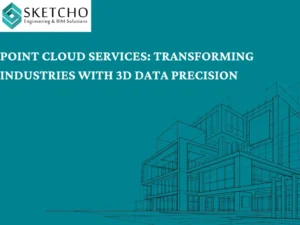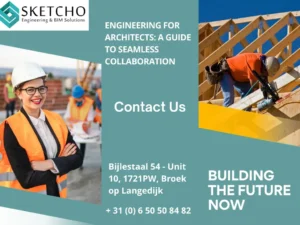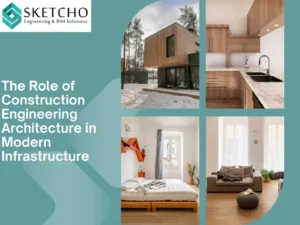Usually, we think of architecture as blueprints and physical models. But have you ever considered how powerful architecture visualisations can be?
They’re like magic, transforming complex designs into captivating images and videos. And trust me, they can make a huge difference in your work.
Let’s dive into the world of architecture visualisations and see how they can elevate your projects.
What Are Architecture Visualisations?
Simply put, Architecture Visualisations are digital or physical representations of architectural designs. Think 3D models, renderings, and virtual tours. These visualisations help architects, designers, and clients see what a building will look like before it’s built.
Why Architecture Visualisations Matter
Imagine trying to explain a complex building design with just words and 2D drawings. It’s challenging, isn’t it? Architecture visualisations solve this problem by creating 3D models that can be rotated, zoomed in on, and viewed from different angles.
Moreover, these visualisations help in avoiding costly mistakes. According to a report by experts, large construction projects typically take longer to finish than scheduled and are over budget.
Visualising the architecture beforehand helps to spot potential issues early, saving both time and money.
Key Components of Effective Architecture Visualisations
Now that we know why they matter, let’s break down the key components that make architecture visualisations effective.
High-Quality 3D Models
The cornerstone of any good architecture visualisation is a high-quality 3D model. These models give you a realistic representation of your design, making it easier to spot any inconsistencies or areas for improvement. Many architects use software like AutoCAD, Revit, or SketchUp to create these models.
Realistic Textures and Lighting
Textures and lighting can make or break your visualisation. Ever noticed how some visualisations look flat and unrealistic? That’s usually due to poor textures and lighting. Make sure to use high-resolution textures and realistic lighting settings to give your model depth and realism.
Interactive Elements
Interactive elements can take your architecture visualisations to the next level. Imagine being able to walk through a virtual version of your building. Sounds cool, right? Interactive features allow clients and stakeholders to explore the design at their own pace, which can be a game-changer for getting buy-in.
Contextual Information
Context is crucial. Placing your model in its intended environment helps to see how it fits within its surroundings. Whether it’s a bustling urban setting or a serene rural landscape, adding contextual elements can make your visualisation more relatable and accurate.
Tools and Software for Architecture Visualisations
You might be wondering, What tools should be used for creating architecture visualisations? There are plenty of options out there, so let’s discuss some of the most popular ones.
AutoCAD
AutoCAD is a staple in the architecture industry. It’s great for creating detailed 2D and 3D models. While it might have a steep learning curve, its comprehensive feature set makes it worth the effort.
Revit
Revit is another fantastic tool, particularly for Building Information Modeling (BIM). It allows for the creation of highly detailed 3D models that can include information on materials, costs, and more. Plus, it’s excellent for collaboration.
SketchUp
If you’re looking for something a bit more user-friendly, SketchUp is a great option. It’s easier to learn and perfect for creating quick, yet detailed, 3D models. It’s particularly popular among smaller firms and individual designers.
The Benefits of Using Architecture Visualisations
So, why should you care about architecture visualisations? Well, there are plenty of reasons:
1. Clarity and Communication: It’s tough to explain complex architectural designs with just words or 2D drawings. Visualisations bridge the gap, making it easier for everyone to understand the project.
2. Client Approval: When clients see a detailed visualisation, they are more likely to approve the design. After all, who wouldn’t be impressed by a lifelike 3D model?
3. Error Detection: Spotting mistakes in the design phase is crucial. Visualisations allow you to catch errors early on, saving time and money.
4. Marketing and Presentation: Stunning visualisations can be a game-changer when pitching your ideas. They make your work stand out and leave a lasting impression.
5. Increased Efficiency: By using architecture visualisations, you can streamline your workflow and collaborate more effectively with your team.
Types of Architecture Visualisations
There are several types of architecture visualisations, each serving a different purpose. Let’s take a look at some of the most common ones:
3D Renderings
3D renderings are probably the most popular type of architecture visualisation. They are high-quality images that showcase your design in a realistic way. You can add textures, lighting, and even people to create a lifelike scene. These renderings are perfect for presentations and marketing materials.
Virtual Reality (VR)
Imagine walking through a building that doesn’t exist yet. Sounds like science fiction, right? Well, VR makes it possible. By using a VR headset, you can explore a virtual version of your design. This immersive experience helps clients and stakeholders get a better feel for the space.
Augmented Reality (AR)
AR is another futuristic technology that is gaining traction in the architecture world. With AR, you can overlay digital models onto the real world using a smartphone or tablet. This is great for visualising how a new building will fit into its surroundings.
Animations and Walkthroughs
Animations and walkthroughs are like short movies that showcase your design. They can highlight different aspects of the project and show how people will move through the space. These are perfect for giving clients a comprehensive view of your design.
Physical Models
While digital visualisations are fantastic, sometimes a physical model can be just as powerful. They give clients something tangible to hold and examine. Plus, they can be a great conversation starter.
How to Create Stunning Architecture Visualisations
Use the Right Software
Choosing the right software is crucial. Some popular options include SketchUp, AutoCAD, and Revit for 3D modeling, and Lumion, V-Ray, and Enscape for rendering. These tools offer various features to help you create detailed and realistic visualisations.
Pay Attention to Details
The devil is in the details, as they say. Make sure to add textures, lighting, and shadows to your models. These small touches can make a big difference in the final result.
Keep It Realistic
While it’s tempting to go all out with your designs, try to keep them realistic. Clients will appreciate a visualisation that accurately represents the final product.
Get Feedback
Don’t be afraid to ask for feedback from your team or clients. They might spot something you missed or have suggestions for improvement.





